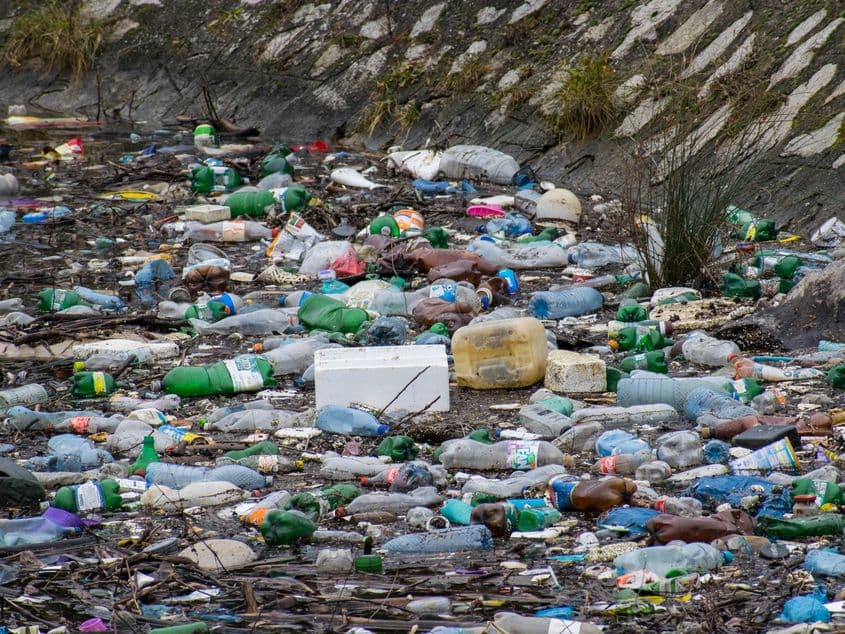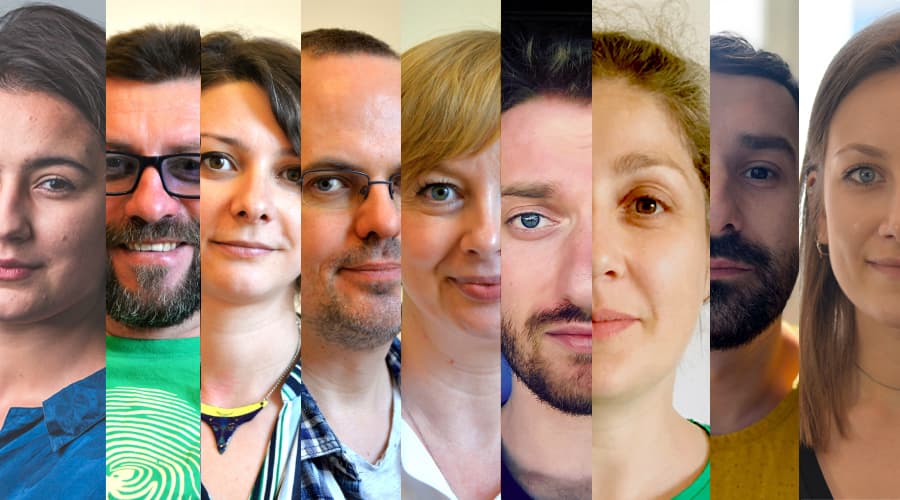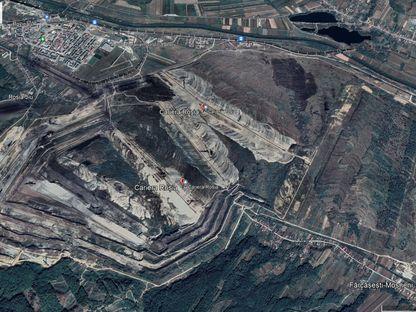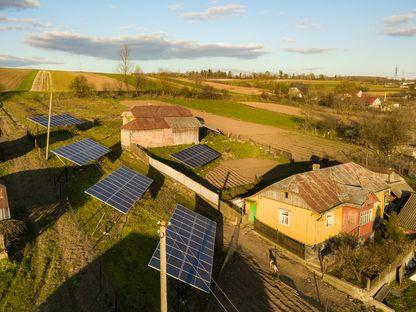
Photo: © Bogdan6179 | Dreamstime.com
27/08/2025
Years of delays and frozen EU funds. A water quality monitoring project, just 6% completed by deadline
- In 2021, the Ministry of the Environment, in collaboration with the Ministry of Health and Romanian Waters (Apele Române), launched a European Union-funded project aimed at improving data collection on chemical substances discharged into surface waters, as well as the quality of drinking water
- With a budget of 190 million lei, the investment was supposed to be completed by December 2023.
- However, by the time the project was supposed to be fully operational, it was just over 6% complete, according to data from the Ministry of the Environment provided at the request of PressOne
- For example, out of 99 laboratories that were supposed to be equipped with new technology, only 12 had gone through this process
- To avoid losing the investment, the authorities decided to phase the project into the new European funding cycle, 2021–2027
- As of July 2025, for a project that should have been completed more than a year and a half earlier, 67% of the planned acquisitions have been contracted.
190 Million Lei and an Integrated Data Platform for Water Quality
In November 2021, the Ministry of the Environment announced that, in partnership with the Ministry of Health and the National Administration of Romanian Waters (Apele Române), it was implementing the project titled "Development of a National Laboratory for Improving Monitoring of Substances Discharged into Waters and of Drinking Water Quality."
"This project aims to equip the existing laboratories under the ownership of the Ministry of Health and the National Administration of Romanian Waters with new equipment so they can be connected to a single integrated platform with data on the quality of wastewater, surface water, and drinking water. This platform will enable full operationalization of a national virtual laboratory through the integration of all data from local and regional data collection platforms managed by the Ministry of the Environment, Ministry of Health, and Romanian Waters," according to a statement provided by the environmental institution to PressOne.
Valued at 190 million lei, the project was to be funded 85% through EU cohesion policy funds for the 2014–2020 financial cycle via the Large Infrastructure Operational Program (POIM). The remaining 15% (about 29 million lei) was to come from the budgets of the two ministries involved.
The project had four major specific objectives:
- Equipping 99 existing laboratories under the Ministry of the Environment and the Ministry of Health;
- Training the specialists who were to work with the new equipment;
- Establishing the methodology and analysis indicators for water quality in line with the new equipment;
- Creating an integrated and interoperable software system for data reporting, which would be accessible to the Ministry of the Environment, the Ministry of Health, the central Romanian Waters authority, as well as the 11 river basin administrations subordinated, in order to report to European institutions.”administrations—so that reporting to European institutions, mandatory under several EU directives, could be done more easily.
The project was scheduled to be completed by December 2023, a deadline by which all projects funded under the 2014–2020 EU financial framework were also supposed to be fully implemented.
By the time the project was supposed to be fully operational, it was only 6% complete
What was the status in December 2023?
Mulți ne citesc, puțini ne susțin. Fără ajutorul tău, nu putem continua să scriem astfel de articole. Cu doar 5 euro pe lună ne poți ajuta mai mult decât crezi și poți face diferența chiar acum!
„Expenditures made in Phase I of the project amounted to 12,429,546 lei, representing 6.5044%,” according to a response from the Ministry of the Environment provided at the request of PressOne.
The reasons behind the state’s inability to complete the project on time were excessive bureaucracy and the complexity of the initiative, ministry representatives explained:
„Considering the complexity and specificity of the project’s activities, correlated with socio-economic conditions and the very long deadlines required for obtaining approvals/authorizations and conducting procurement procedures, a request was made to phase the project into the 2021–2027 funding cycle,” the ministry said in its response to the newsroom.
As previously reported by PressOne, projects funded during the 2014–2020 period had to be finalized by December 2023. Those that remained incomplete and met certain criteria could be phased, meaning transferred into a new funding period, which is what happened with this project.
Why the Project Was Phased
Coal Mining Expansion Leads to Deforestation: Over 470 Hectares of Forest Cut Down in Gorj, Romania
Over the past six years, more than 470 hectares of national forest land have been allocated by the government, without compensation, to the Oltenia Energy Complex (CEO) for the expansion or opening of new coal mines.
The not-so-green Romania. The state delays settlements for photovoltaic panels by 2 years
PressOne reviews the main dysfunctions in the production, consumption and distribution of energy from renewable sources, as revealed by discussions with consumers and data provided by official sources at the request of our editorial office.
According to the Ministry of the Environment, the funding contract for the project was signed in October 2021. After that, it took more than half a year to adopt a Government Decision approving the necessary investments, as required by law.
„The project's general procurement plan and the breakdown plan for the three years of implementation, mandatory preliminary steps to launch public procurement procedures under the funding contract, could not be approved by the Ministry of Public Finance due to the lack of a Government Decision. Such a decision is required and mandatory under Article 108 of the Romanian Constitution (republished), and Article 42, paragraph (1), letter a) of Law no. 500/2002 on public finances (with subsequent amendments and additions), which mandates a Government Decision for all procurement considered major investments—specifically, investments exceeding 40 million lei, as is the case here,” ministry representatives explained in their response to PressOne.
At the time the project was supposed to be completed, most of the objectives had not even reached 50% fulfillment. For example, out of the 99 existing laboratories that were supposed to be equipped with new technology, only 12 had received equipment. That means just over 12% of this objective was achieved.
Un newsletter pentru cititori curioși și inteligenți.
Sunt curios
Another key objective was the training of personnel who would operate the new equipment. Out of 226 targeted individuals, only 5 had received training—which represents just 2.2% of the total.
Regarding the analysis methodology and new analysis parameters, only 3 out of 13 planned data analysis methodologies were implemented by December 2023. And while the target number of new parameters/substances for analysis was 46, only 7 had been implemented by that time.
From the total 190 million lei allocated to improve the collection and reporting of data on surface water and drinking water quality, just over 12 million lei had been spent by December 2023, when the project should have been fully functional.
„The entire amount was authorized as eligible expenditure, of which 85% was non-refundable EU funding (10,565,114.64 lei) and 15% co-financed from national sources (1,864,432 lei),” the Ministry of the Environment told PressOne.
According to the same response, all unspent funds from Phase I were transferred to Phase II of the project.
Thus, although 190 million lei were initially allocated for the first phase and just over 12 million were used, the project was granted a new funding package of over 178 million lei in Phase II to avoid losing the already initiated investment. This money could have been allocated to new projects had it been used during the originally defined implementation period.
Double the Implementation Time
After a new process of drafting, technical and financial evaluation, and contracting, Phase II of the project started in October 2024, with a new implementation deadline of March 2027. This means the project now requires twice the implementation period compared to the initial plan.
„According to the latest monitoring report from July 2025, procurement contracts worth approximately 120,473,881.26 lei have been signed, representing 67.43% of the total budget for Phase II. Of this, approximately 70,351,761.51 lei have been paid by the beneficiary, representing about 39.38% of the total for Phase II,” the Ministry stated in its response to PressOne.
Out of the 99 laboratories that are to be equipped with new gear, 32 belong to the National Administration of Romanian Waters (ANAR) and 67 to the Ministry of Health, which are project partners alongside the Ministry of the Environment.
According to the environmental authority: „The laboratory equipment has been purchased, installed, and put into operation in all 32 laboratories belonging to ANAR,” and those under the Ministry of Health „are equipped and operational at 80% completion.”
In addition, 136 individuals have been trained in the 32 laboratories equipped under ANAR. However, the response does not include information on the training of personnel who will operate the new equipment in the laboratories under the Ministry of Health.
The slowest progress is being made on the integrated data collection platform—for both national and local levels—as well as the reporting system to European institutions.
Currently: “The procurement of the integrated IT system, virtual laboratory, hardware, peripherals, communication infrastructure, and software development services is still in progress (under evaluation),” according to the Ministry’s response to PressOne.
Once completed, the project is expected to contribute to the production of accurate data necessary for EU-level reporting, as required by several European directives concerning water quality.

Avem nevoie de ajutorul tău!
Mulți ne citesc, puțini ne susțin. Asta e realitatea. Dar jurnalismul independent și de serviciu public nu se face cu aer, nici cu încurajări, și mai ales nici cu bani de la partide, politicieni sau industriile care creează dependență. Se face, în primul rând, cu bani de la cititori, adică de cei care sunt informați corect, cu mari eforturi, de puținii jurnaliști corecți care au mai rămas în România.
De aceea, este vital pentru noi să fim susținuți de cititorii noștri.
Dacă ne susții cu o sumă mică pe lună sau prin redirecționarea a 3.5% din impozitul tău pe venit, noi vom putea să-ți oferim în continuare jurnalism independent, onest, care merge în profunzime, să ne continuăm lupta contra corupției, plagiatelor, dezinformării, poluării, să facem reportaje imersive despre România reală și să scriem despre oamenii care o transformă în bine. Să dăm zgomotul la o parte și să-ți arătăm ce merită cu adevărat știut din ce se întâmplă în jur.
Ne poți ajuta chiar acum. Orice sumă contează, dar faptul că devii și rămâi abonat PressOne face toată diferența. Poți folosi direct caseta de mai jos sau accesa pagina Susține pentru alte modalități în care ne poți sprijini.
Vrei să ne ajuți? Orice sumă contează.
Share this




